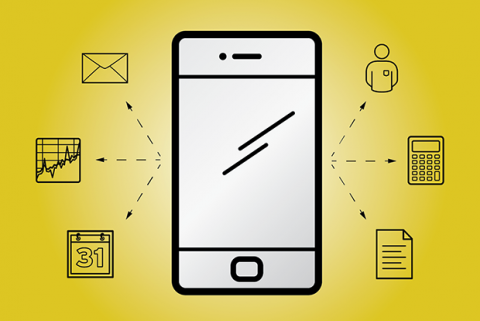At most mortgage companies, loan officers walk customers through the application process and update them at key moments. That represents one customer journey. But for the last three years our company has been building another one that transforms the way a customer interacts with technology and their loan officer.
Which of the following experiences would work better for you?
- Experience A: You mail or hand us a pay stub, at which point we have to scan it; open it up in a print driver; upload it into our imaging system; label it; and tie it into the overall loan process.
- Experience B: You log into our mobile app, take a picture of your paystub, and it immediately goes into our imaging system with your W-2, all labeled to the right loan. That’s it. And you can do it from your kitchen table.
Getting to the mobile-enabled world of Experience B is where I’ve been spending a lot of my time. With our new process, instead of requiring that the applicant fill out a regular loan application, we can start by interviewing them online with questions in layman’s terms. As you can imagine, this immediately improves the emotional tone and experience. After they apply, we move them to their mobile device where they can take pictures of their docs and upload them to us, instead of having to scan them or physically bring them in. That’s another experience boost for the applicant, but a huge efficiency gain for us as well.
It’s my loan, can I just see it?
A major goal of our application modernization effort has been to get the customer more engaged. We conducted focus groups with people who had recently gone through the mortgage process and asked them about their experience. One of the things they said most often was that transparency was completely lacking. They didn’t know what was next. They didn’t know why they were given some things. They didn’t know how far along they were in the process.
As a result, a big piece of what we’re doing with our digital transformation project is giving customers status: you’re this far through this process, this is what’s left, this is what to expect next. Because when you get down to it, a mortgage is often the biggest transaction of someone’s life. It’s scary when you literally don’t know if something is happening on your loan today or not, or what’s next. We heard consumers saying things like: “They asked me for these ten docs. I provided them. The next day they ask me for another doc. And then two days later ask for two or three more docs. Why don’t they just ask for these all in the beginning?”
Now imagine a process where we can reach out proactively and tell the consumer: “Some of the information you provided in those first ten docs required us to get more documentation that we would have never known we needed.” Clearly this eases some tensions and frustrations.
Let’s face it: the days of sitting across the desk from a loan officer, telling them your information as they all key it in the system, are behind us. Just think about millennials. They don’t want to come in your office and do it. They want to do it all online. Try telling them that your mortgage company doesn’t have an app — it simply won’t register. It has to be mobile.
Selling in a revolution
Of course, allowing consumers to apply for a mortgage using their mobile phone is not something that happens overnight. I started about three years ago in a weekly one-on-one with our CEO. I began by slowly talking him through what and my team felt the future of our industry looked like. He was highly engaged in the conversation and asked a lot of questions that challenged me and challenged the thought process.
Once the proposal was ready, we had a strategic offsite with all of our regional production managers and all the senior managers of our company. I did a 30-minute walk-through of what we felt the future of the transaction looked like, and we shared some snapshots from the consumer focus groups so they weren’t just hearing it from me. Last year I got the budget to get started, and this year we are rolling it out, using one of our sales leaders to communicate the technology message.
Am I nervous about a roll-out that was three years in the making? I’d call it a healthy nervous. But we’ve put everything else that’s not tied to this delivery on hold so that we can have all of our attention focused on it. That’s why, on the whole, we’re very excited. It’s not every day you get to transform your customer experience. What could you be doing with yours?
Tim Elkins joined PrimeLending in November 2008 as Senior Vice President, Chief Information Officer. In October 2012, Tim was promoted to executive vice president, chief information officer, and he is responsible for information security, IT operations, and technology initiatives.




